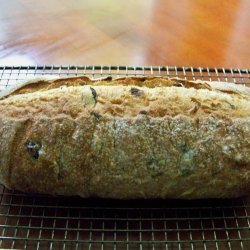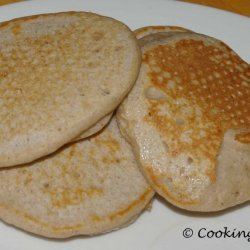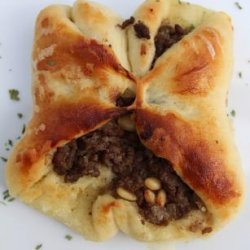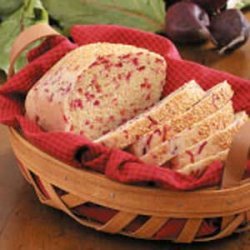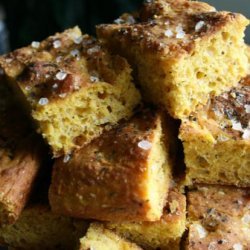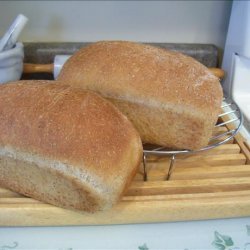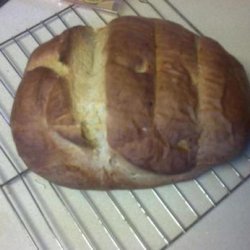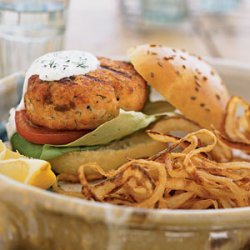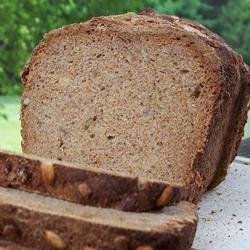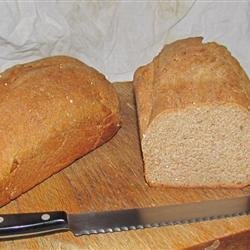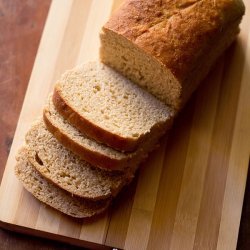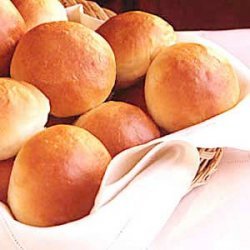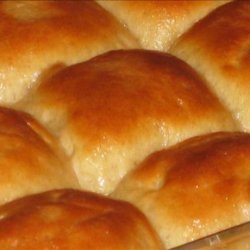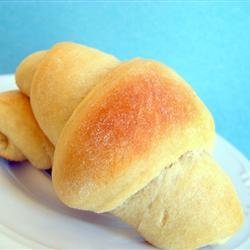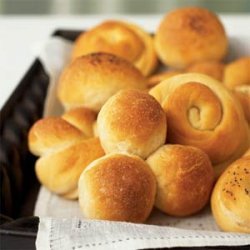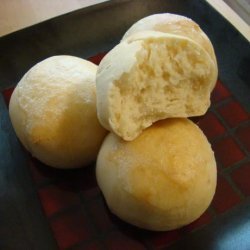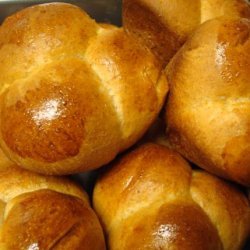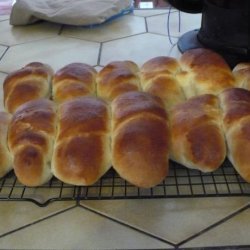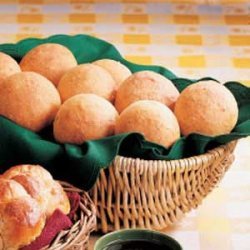Directions:
- Bake and mash potato: Preheat oven to 375°F. Using fork, pierce potato in several places. Wrap in aluminum foil and bake until easily pierced with fork, about 50 minutes. When cool enough to handle, peel and mash. Reserve 1/2 cup (4.5 ounces) mashed potato and discard remainder or save for another use.
- Make dough starter (sponge): In bowl of stand mixer fitted with whisk attachment, whisk together 1/2 cup plus 1 tablespoon (3 ounces/84 grams) flour, 1/3 cup plus 4 teaspoons (3.5 ounces/98 grams) water, honey, and 1/4 teaspoon yeast until very smooth, about 2 minutes. Sponge should be consistency of thick batter). Scrape down sides of bowl.
- In medium bowl, whisk together remaining 1 cup (5 ounces/140 grams) flour, remaining 1/2 teaspoon yeast, and milk powder. Sprinkle mixture over flour mixture (sponge) in bowl of mixer to form blanket on top of sponge. Cover bowl tightly with plastic wrap and let stand at least 1 hour, preferably up to 4 hours. (Starter can be made ahead and refrigerated, tightly covered with plastic wrap, overnight. There is no reason to bring starter to room temperature before proceeding.)
- Mix dough: Attach dough hook to stand mixer. Add mashed sweet potato and 1 tablespoon softened butter to starter and mix on low (#2 on Kitchen Aid) until rough dough forms, about 1 minute. Scrape down sides of bowl, then cover tightly with plastic wrap and let dough rest 20 minutes.
- Sprinkle salt over dough and knead on low (#2 on Kitchen Aid) until smooth, shiny, and slightly sticky to touch, 7 to 10 minutes. Scrape down sides of bowl. (If dough is too sticky, transfer to lightly floured work surface and knead in small amount of flour. If too stiff, add small amount of cold water and knead briefly.)
- First rise: Using vegetable oil or nonstick vegetable-oil spray, lightly oil 3-quart or larger bowl (or dough-rising container). Transfer dough to bowl and lightly oil or spray top of dough. Using tape, mark outside of bowl to approximately double current height of dough. Cover bowl tightly with plastic wrap and let dough rise in warm place (75°F to 80°F, see Chef's Notes, below) until doubled in size, about 1 hour.
- Second rise: Using oiled dough scraper or spatula, transfer dough to lightly oiled work surface.
- Gently stretch bottom of dough and fold up to center, then repeat with left side, right side, and top. Round dough package then transfer to bowl, smooth side up, and lightly oil or spray top of dough. Using tape, mark outside of bowl to approximately double current height of dough. Cover bowl tightly with plastic wrap and let dough rise in warm place until doubled in size and depression holds when pressed gently with finger, about 1 hour.
- Shaping dough and final rise: Line large baking sheet with parchment paper.
- Transfer dough to lightly floured work surface and, using lightly oiled bench scraper, divide into 4 equal pieces, each weighing about 4 ounces (112 grams). Divide each piece into 3 pieces, each weighing about 1.3 ounces (36 grams). Keep remaining dough covered while working with each batch.
- Using lightly floured hands, roll 1 dough piece between palms to form smooth, 1 3/4-inch-wide ball. Pinch indentation on bottom of ball tightly to seal. Repeat to form remaining balls.
- Transfer melted butter to small bowl. Dip each dough ball into melted butter, coating all sides, and transfer, sealed-side-down, to prepared baking sheet, spacing about 2 inches apart. Lightly coat sheet of plastic wrap with vegetable oil or nonstick vegetable-oil spray and gently cover pan with oiled wrap. Let rolls rise in warm place until doubled in size and depression very slowly fills in when pressed with fingertip, about 45 minutes.
- Bake rolls: While dough is rising, position rack near bottom of oven and top with baking stone or heavy baking sheet. Set aluminum foil-lined cast-iron pan or heavy rimmed baking pan on floor of oven and preheat oven to 400ºF for 1 hour.
- Quickly transfer baking sheet with rolls to hot baking stone (see Chef's Notes) and add 1/2 cup ice cubes to pan beneath.
- Bake rolls, rotating pan 180 degrees halfway through, until golden brown and skewer inserted in middles comes out clean (instant read thermometer inserted into center will register about 190ºF), about 12 minutes. Transfer rolls from baking sheet to rack to cool completely. Serve warm or at room temperature.
- Chefs Notes: Dough rises best around 75°F to 80°F. If your house is on the cold side, you can set a container of very hot tap water near the rising dough and cover the dough and the hot water with a large plastic container or bowlyou will need to reheat the water every 30 to 40 minutes. Alternatively you can place the dough (and the small container of very hot water) in a microwave oven (not turned on) or a standard oven without a pilot light, but with the oven light turned on to provide gentle heat. If you want to make this bread over a 2-day period, you can refrigerate it overnight after the first rise. Once it has doubled in size (first rise), gently press the dough down in the bowl, then cover with plastic wrap that has been lightly coated with vegetable oil or nonstick vegetable-oil spray and refrigerate. After one hour and again after two, gently press the dough down. Then refrigerate overnight. The next day, bring the dough to room temperature at least 1 hour before shaping and baking the loaf. Keep in mind that the time in the refrigerator replaces the second rise so there is no need for a second rise. For proper texture, it's important for the bread to get a blast of heat as soon as it goes into the oven. For this reason, the oven needs to be preheated for a full hour, and it's important not to let too much heat escape when you put the bread in. When transferring the dough to the oven to bake, be sure to shut the door quickly.
- THE DOUGH PERCENTAGE: Flour: 100% (includes starch contained in the potato) Water: 64.9% (includes water contained in the butter and yam) Yeast: 0.93% Salt: 1.7% Butterfat: 4.4%
Nutrition Facts
| Amount Per 1 Serving | |||
| Calories | 884.11 Kcal (3702 kJ) | ||
| Calories from fat | 149.98 Kcal | ||
| % Daily Value* | |||
| Total Fat | 16.66g | 26% | |
|---|---|---|---|
| Cholesterol | 42.18mg | 14% | |
| Sodium | 1929.25mg | 80% | |
| Potassium | 464.08mg | 10% | |
| Total Carbs | 156.57g | 52% | |
| Sugars | 13.26g | 53% | |
| Dietary Fiber | 5.94g | 24% | |
| Protein | 23.09g | 46% | |
| Vitamin C | 1.2mg | 2% | |
| Vitamin A | 0.1mg | 5% | |
| Iron | 9.6mg | 53% | |
| Calcium | 153.6mg | 15% | |
| Amount Per 100 g | |||
| Calories | 283.9 Kcal (1189 kJ) | ||
| Calories from fat | 48.16 Kcal | ||
| % Daily Value* | |||
| Total Fat | 5.35g | 26% | |
|---|---|---|---|
| Cholesterol | 13.54mg | 14% | |
| Sodium | 619.52mg | 80% | |
| Potassium | 149.03mg | 10% | |
| Total Carbs | 50.28g | 52% | |
| Sugars | 4.26g | 53% | |
| Dietary Fiber | 1.91g | 24% | |
| Protein | 7.42g | 46% | |
| Vitamin C | 0.4mg | 2% | |
| Iron | 3.1mg | 53% | |
| Calcium | 49.3mg | 15% | |
* Percent Daily Values are based on a 2000 calorie diet. Your daily values may be higher or lower depending on your calorie needs.
Find out how many calories should you eat.
Get Your Recipe of Health!
Follow RecipeOfHealth on Facebook!


